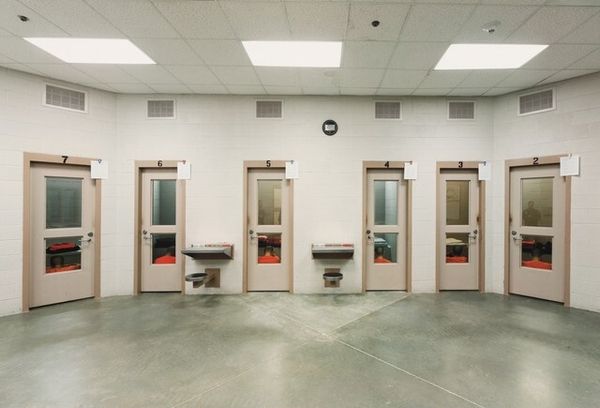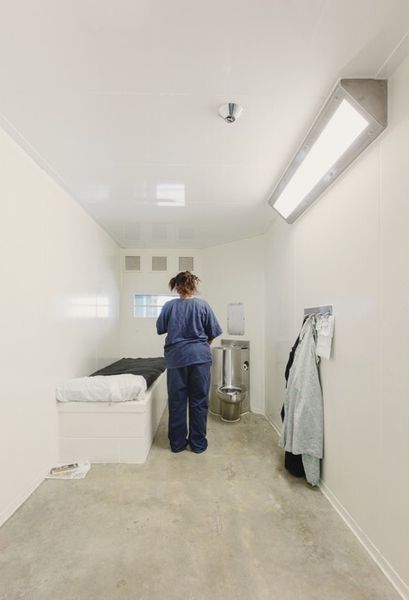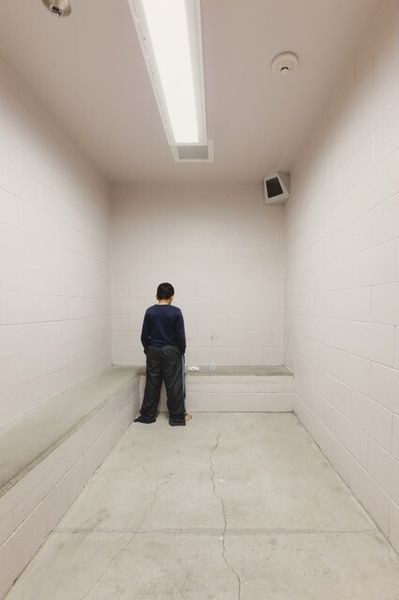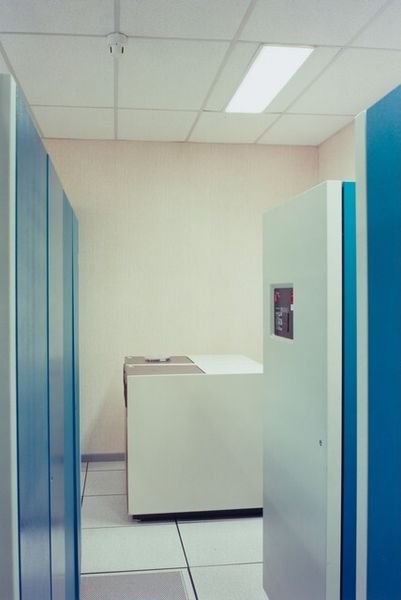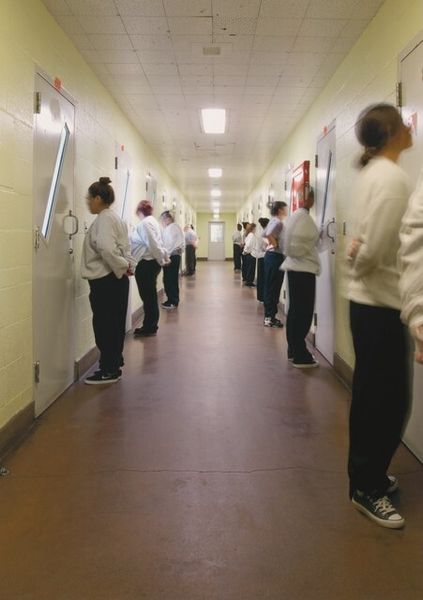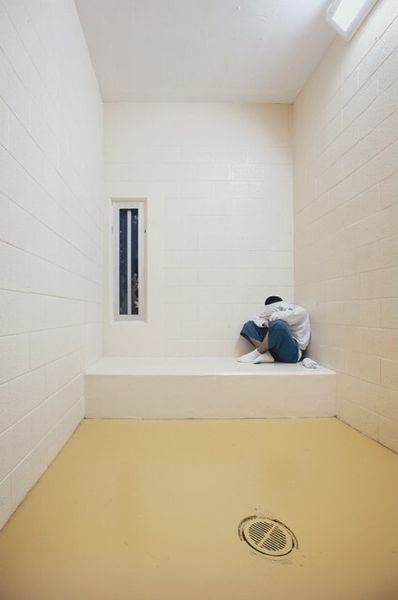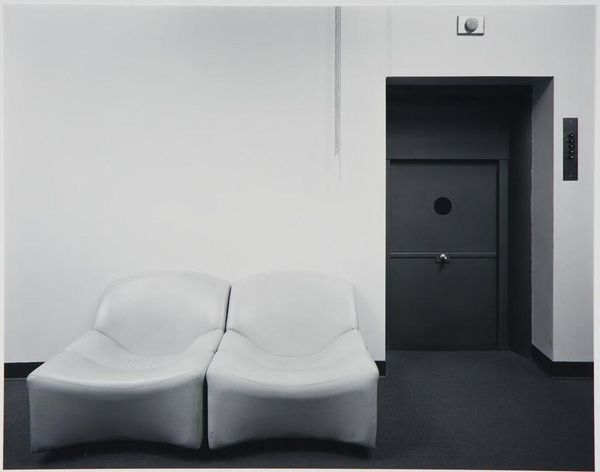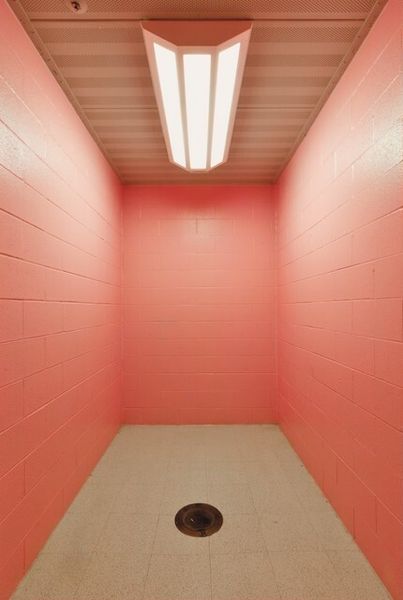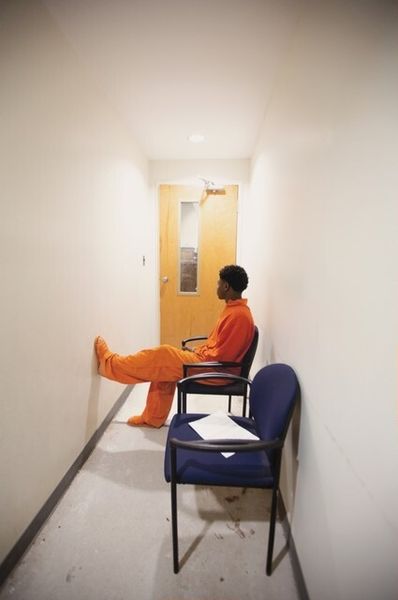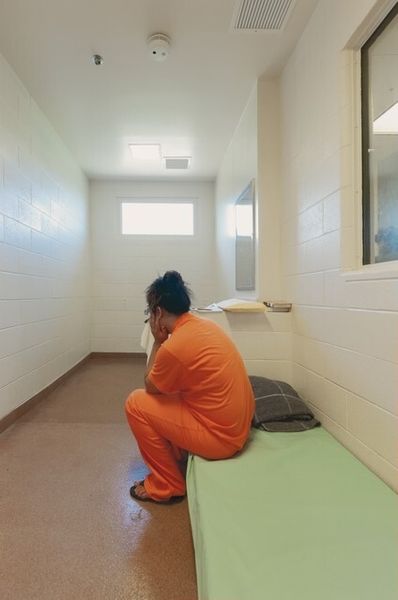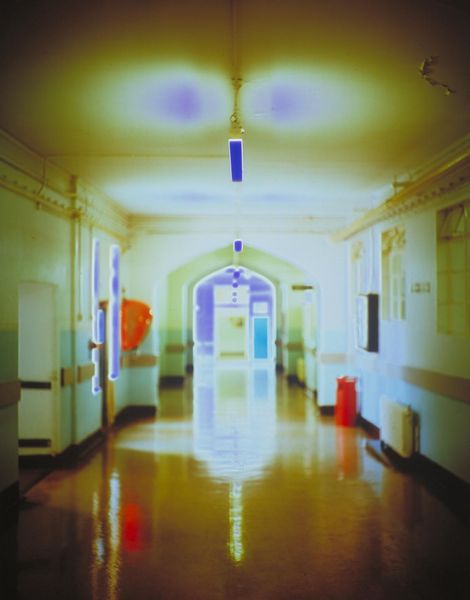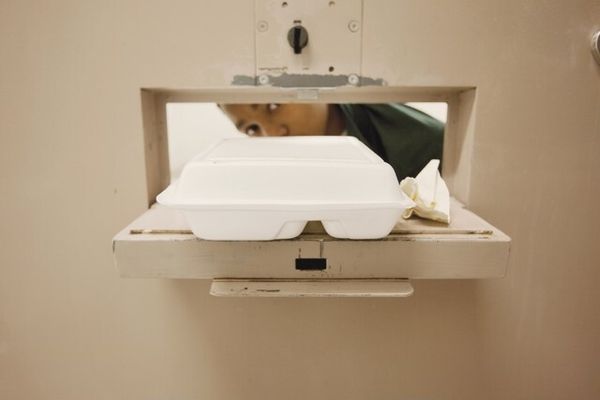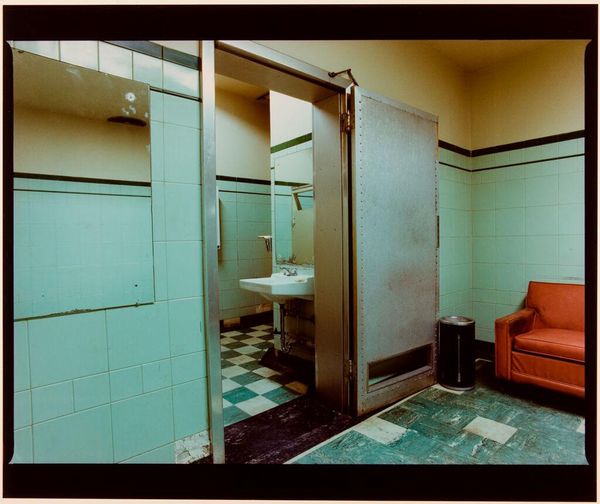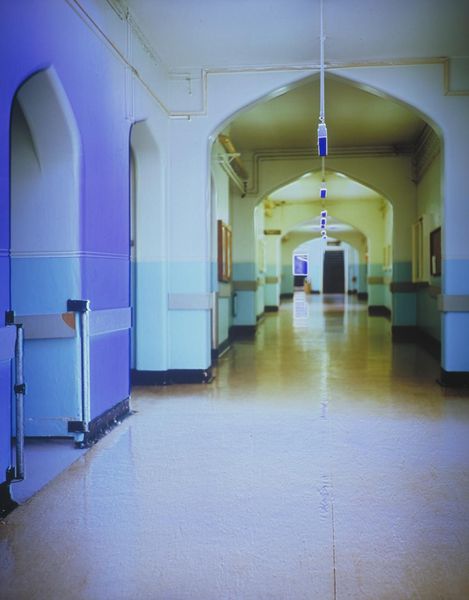
photography
#
contemporary
#
photography
Dimensions: image: 37.2 × 55.9 cm (14 5/8 × 22 in.) sheet: 42.9 × 61 cm (16 7/8 × 24 in.)
Copyright: National Gallery of Art: CC0 1.0
Curator: My first impression is of… sterility, almost a chilling impersonality, even with that figure in the back. There’s an eerie echo of repetition that sends a shiver down my spine. What's the story here? Editor: What we're looking at is Richard Ross's "Wisconsin," a 2009 photograph, and part of his larger project focusing on spaces of confinement and the juvenile justice system. Curator: Spaces of confinement... that clinical, echoing layout just screams of institutional life, doesn't it? The row of telephones and those sparse metal stools... they're like placeholders for conversations never fully realized. Editor: Precisely. Ross’s work serves as a powerful critique of these carceral systems, pushing us to consider their dehumanizing effects. He’s interested in documenting the architecture of control, drawing attention to how these spaces physically and psychologically impact those who inhabit them. Curator: Absolutely. Those repetitive forms, the regimented spaces... even the telephones feel more like symbols of restriction than connection. I keep being drawn to the lone person, sitting still in an orange jumpsuit in the back of the shot. They feel completely disconnected from everyone. Editor: Orange being, of course, the universally recognized color of prisoners. Ross is keen to show the social construction of punishment. How architectural and systemic violence becomes normalized. We scarcely blink at such a sight anymore, do we? Curator: Sadly, you’re right. I suppose that’s what makes this image so quietly disturbing. Its almost banal aesthetic belies its grave implications. And the lighting. Flat, fluorescent. Merciless, you might say. It exposes everything. Editor: Ross deliberately uses photography to offer visibility. He challenges the often-obscured reality of prisons, prompting viewers to question the normalization of imprisonment. His lens invites a reckoning with issues of justice, power, and ultimately, humanity. Curator: A haunting reminder that behind the statistics, behind the concrete walls, there are lives shaped by systems that demand our urgent attention. The image leaves me wondering about the human element – the connections strained, the voices stifled in spaces like this. Editor: Indeed, its lasting power resides in prompting us to consider the human cost behind the imposing structures we create as a society.
Comments
No comments
Be the first to comment and join the conversation on the ultimate creative platform.
